How many humans have ever walked the Earth?
A small mathematical and historical exercise to determine how many people have ever walked the Earth throughout human history.
Knowing the exact number of inhabitants on Earth at any given moment is impossible. Even countries with more robust census systems have the problem of large natural population fluctuations, between births and deaths, as well as many difficulties in effectively measuring migratory flows. It is often estimated that some countries can limit this error to 1% of the population, but we also know that other countries provide figures with much larger margins of error.
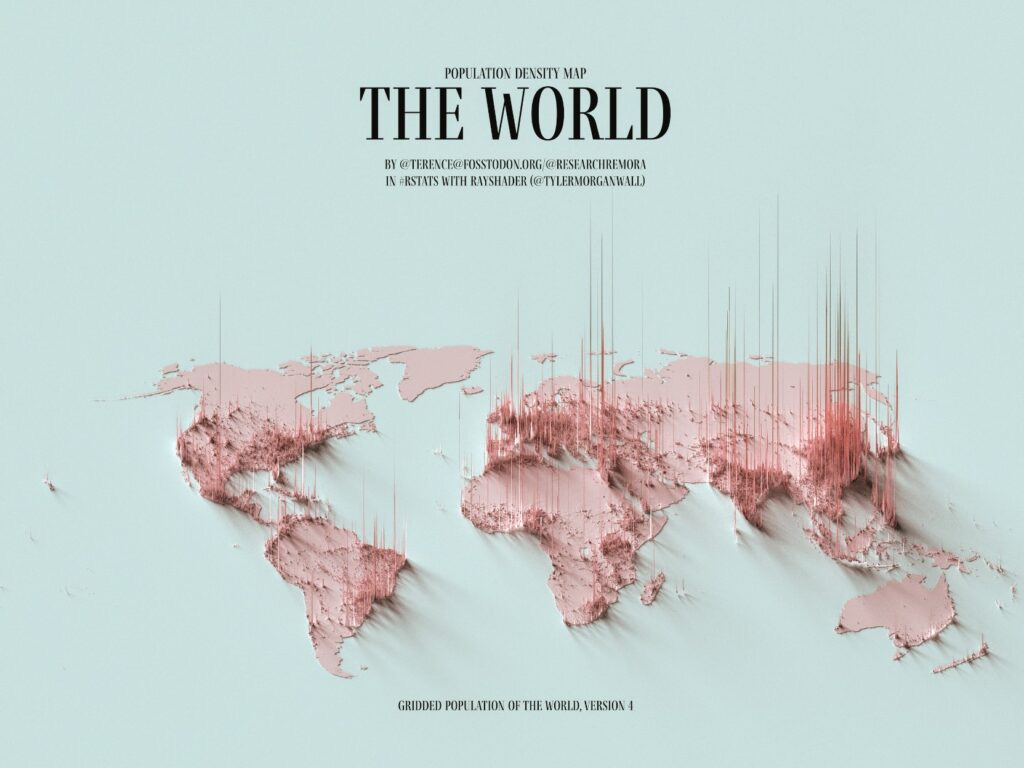
Despite this lack of detail, estimates of the total population can be narrowed down to a relatively small range. Depending on the source consulted, this number can vary from the 8.1 billion estimated by the United States Census to the 8.26 billion estimated by Worldometer.
That number is simply a figure at a given moment in time. But what would we have to do to find out how many people have inhabited the Earth since the dawn of humanity?
Disclaimer: I want to emphasize that this is a game of big numbers to arrive at a more or less valid figure. Big numbers have the virtue of allowing us to arrive at a figure that, while it cannot be considered a solution, does give us a reliable and well-founded order of magnitude.
The starting point
If we want to answer the first question, the first thing we have to do is set limits: since when has the human being been human?
Archaeological and palaeontological records have allowed us to learn about many hominid species that populated the Earth before us. Some of these hominids can be considered our direct ancestors, but the vast majority belong to branches that are now extinct.
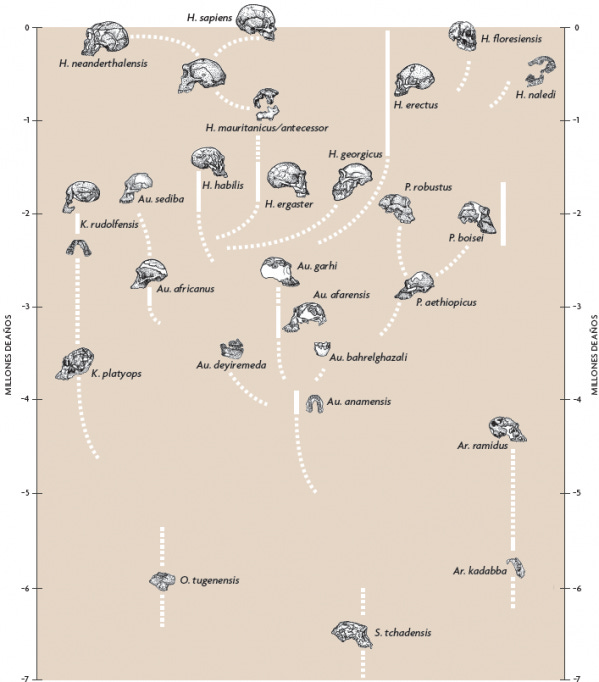
To facilitate calculations, we will focus solely on modern Homo sapiens, whose origin is currently established at around 190,000 years ago. In other words, we will leave iconic figures such as Lucy off the list, in the sky with diamonds1.
With the starting point marked, we must try to determine the population size at each moment since that initial date. Of course, there are no census records from this period, but we can make rough estimates that bring us closer to the answer.

Around 6,000 BC, several sources agree that the world population was around 5 million. We had already reached practically every corner of the Earth and, moreover, we can speak of a relatively stable population. To arrive at this figure, in the absence of better data, we can assume that there would have been sustained growth from an initial number of 0 or 2 people2.
The intermediate steps
There is less consensus about the year 1. The Population Reference Bureau3 estimates a population of 300 million, assuming that the Roman Empire had a population of around 40 or 50 million and that Asia was already the most populated area in the world at that time. Estimates from other sources vary from 170 million to over 500 million inhabitants.
From this point onwards, despite still not having reliable historical records, we do have more insight that can facilitate the reconstruction of world population data, which is confirmed by the small difference between the estimates from different sources. To facilitate the calculations, we will again use the data from the Population Reference Bureau.
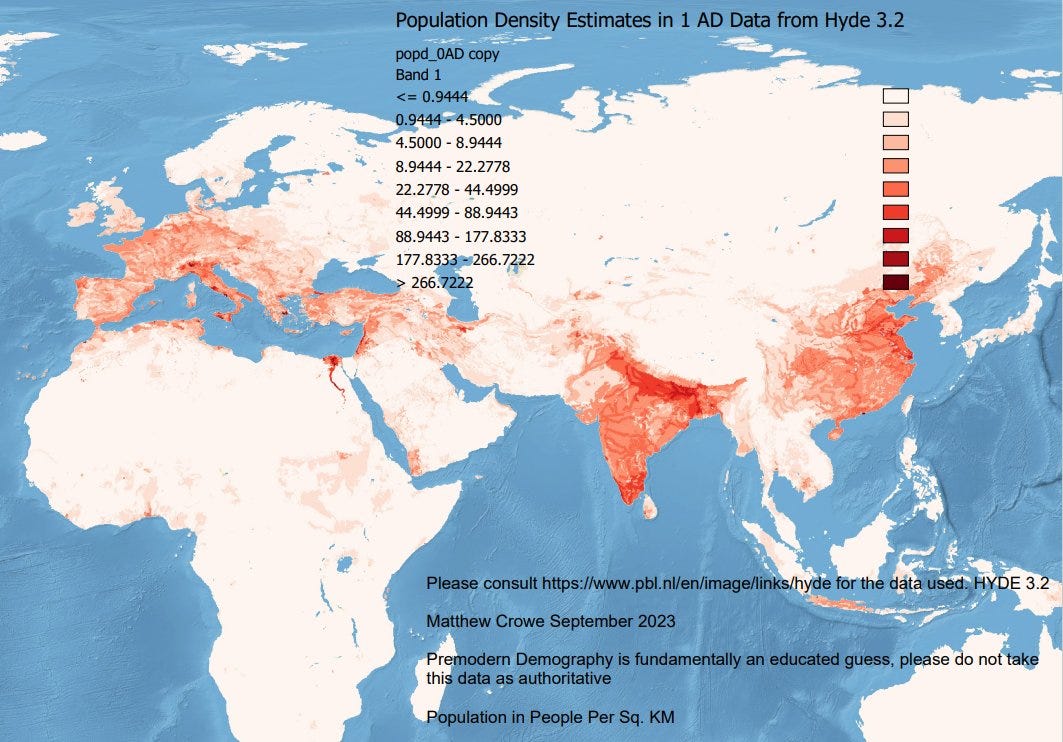
Population figures at any given time do not provide clarity on life expectancy and how much of those figures represent the same individuals or entirely different people. Therefore, we must try to incorporate birth rates4 and infant mortality rates5 into the equation. We know that centuries ago, infant mortality was high, and based on figures from pre-industrial societies, we can be almost certain that half of the children born in the world died before reaching one year of age.
It is even plausible that in hunter-gatherer groups this figure was even higher. An additional child without sufficient resources for sustenance could be a problem that needed to be eliminated if it was not essential to the future of the group. Even so, at this point, we will estimate on the low side and take as a reference an infant mortality rate of 500 per 1,000.
From archaeological records, we know that life expectancy was between 10 and 12 years during the Bronze Age and Iron Age. Given that we have to guarantee a population replacement rate and slight growth, we can determine that the birth rate would be around 80 per 1,000 inhabitants. This figure would guarantee that we can match the population estimates we have set as starting points.
The final point
From the Late Middle Ages onwards, human life began to improve. Medicine and public health still had a long way to go, but infant mortality began to decline, requiring a lower birth rate to ensure population replacement. However, it was not until the invention of pasteurised milk and major advances in medicine that infant mortality declined sharply, leading to a massive explosion in the world’s population.
In just 200 years, we have managed to triple the number of inhabitants. It was not until 1804 that we first reached 1 billion humans on Earth. It took us 123 years, until 1927, to double that number for the first time and reach 2 billion inhabitants. Subsequently, it took us only 47 years to reach 4 billion in 1974 and another 48 years to reach 8 billion in 2022.
So, considering the starting point, the population estimates at specific points in the study and the birth rate during the different periods, we would have a table like the one below.
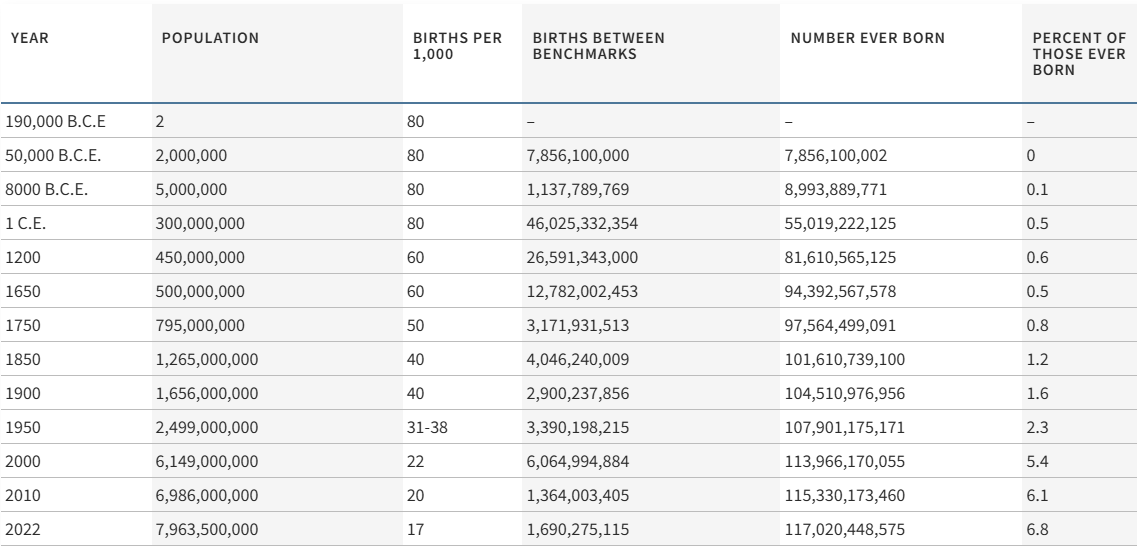
These estimates were made by Carl Haub6, an employee of the Population Reference Bureau. According to them, by 2022, over 117 billion people had been born on Earth. In other words, almost 7% of the people who have ever lived are currently living on Earth.
According to future estimates, we will reach 120 billion around 2050, by which time more than 8% of people who have ever lived will be living on Earth. The large number of inhabitants we have today will cause this figure to continue to rise rapidly in the coming decades, although this does not mean that the world population alive at any given time will continue to increase.
But I already told that story in this other article.
The abyss of demographic winter
Beyond personal fears lie fears that transcend the individual. Fears about the future of humanity, how far we will go and what might be the last stumbling block we encounter, the one that marks the point of no return.
Lucy is a specimen of Australopithecus afarensis found in Hadar (Ethiopia) and dated 3.2 million years ago. It actually got its name from the Beatles’ song Lucy in the Sky with Diamonds, as it was playing on repeat at the camp during the discovery.
This number leaves traces of Adam and Eve, but it is simply necessary from a mathematical perspective to perform the calculations. The initial number can be considered a necessary starting error.
The Population Reference Bureau (PRB) is an organisation that has been collecting population data for use in studies and research for almost a century.
The birth rate is calculated as the total number of births per thousand inhabitants.
The infant mortality rate is calculated as the number of deaths per thousand births during the first year of life.
How Many People Have Ever Lived on Earth? - This is the current version of the study, although it has been updated several times since its original publication in 1995.



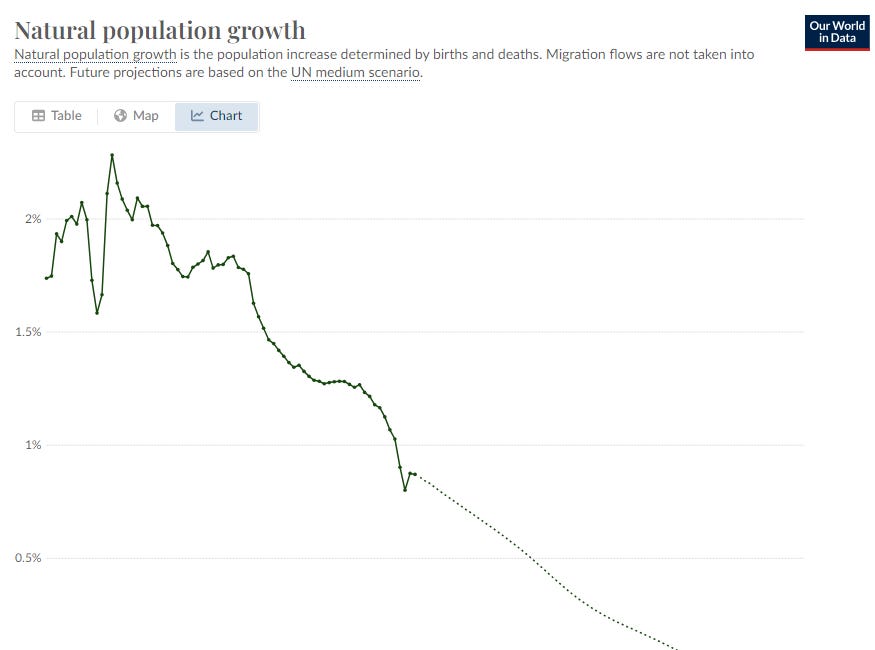
Marvellous. Thank you.